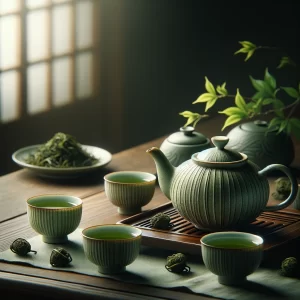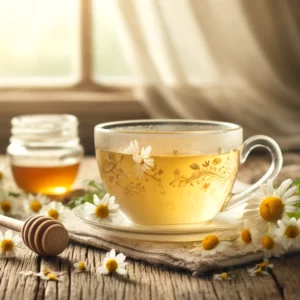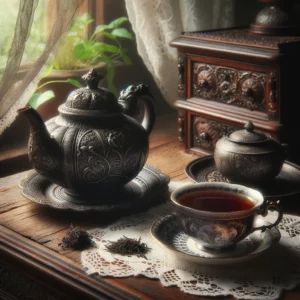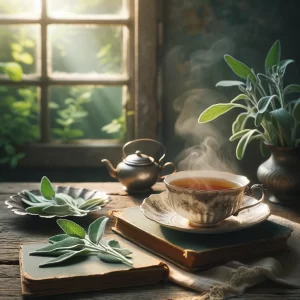Gyokuro Green Tea is not just any tea; it’s a treasure among tea lovers, renowned for its unique cultivation, rich flavor, and esteemed place in the world of green teas. Known as the “Jewel Dew,” Gyokuro offers a tea experience unlike any other, combining a deep, umami-rich taste with a history as fascinating as its production process. This blog post dives deep into the world of Gyokuro Green Tea, unfolding its secrets, from its shaded cultivation to the art of brewing the perfect cup. Whether you’re a seasoned tea enthusiast or new to the green tea scene, join us on this enlightening journey through the essence of Gyokuro Green Tea.
Table of Contents
- Introduction to Gyokuro Green Tea
- The Origins and Rich History of Gyokuro
- What Makes Gyokuro Special?
- Brewing the Perfect Cup of Gyokuro
- Creative Ways to Enjoy Gyokuro
- The Best Pairings with Gyokuro Green Tea
- Finding and Storing Gyokuro Green Tea
- The Art of Gyokuro: Cultivation and Processing
- Conclusion: The Timeless Appeal of Gyokuro Green Tea
Introduction to Gyokuro Green Tea
Gyokuro Green Tea, with its rich, umami flavor, stands out in the vast world of teas. Unlike other green teas, Gyokuro is grown under shade for about three weeks before harvesting. This unique process increases its amino acid content, giving Gyokuro its distinctive sweet and mellow taste. It’s often considered the finest green tea, cherished for its depth of flavor and revered in tea ceremonies across Japan and beyond.
The Origins and Rich History of Gyokuro
The journey of Gyokuro begins in Japan, its birthplace. It was first produced in the 19th century, in the Uji district, a region famous for its high-quality teas. The invention of the shading technique marked a significant milestone in tea cultivation, setting Gyokuro apart from other teas. This method was a breakthrough, enhancing the tea’s sweetness and creating a richer flavor profile that has captivated tea enthusiasts worldwide.
What Makes Gyokuro Special?
Cultivation: The secret to Gyokuro’s exceptional taste lies in its cultivation. The tea bushes are covered to shield them from direct sunlight for about 20-30 days before harvest. This shading process reduces the plant’s photosynthesis rate, increasing chlorophyll levels and amino acids, particularly theanine, which contributes to the tea’s sweet and umami flavors.
Flavor Profile: Gyokuro’s taste is uniquely rich and full-bodied, characterized by a sweet, umami richness with a smooth, velvety finish. Its flavor complexity is unmatched, offering a sensory experience that lingers on the palate.
Brewing the Perfect Cup of Gyokuro
Brewing Gyokuro is an art in itself, requiring attention to detail to unlock its full flavor potential.
- Water Temperature: Use cooler water than you would for other green teas, around 60-70°C (140-158°F), to avoid bitterness and bring out its sweet, umami flavors.
- Steeping Time: Keep the steeping time short, about 1-2 minutes, to prevent overpowering its delicate taste.
- Utensils: For an authentic experience, consider using a traditional Japanese teapot (kyusu) and cups.
Creative Ways to Enjoy Gyokuro
Beyond the traditional hot tea, Gyokuro can be enjoyed in various innovative ways:
- Cold Brew: Steeping Gyokuro in cold water brings out its sweet and refreshing taste, perfect for warmer days.
- In Recipes: Use Gyokuro-infused water to cook rice or as a base for smoothies to add a unique flavor twist.
The Best Pairings with Gyokuro Green Tea
Pairing food with Gyokuro can enhance both the tea and the food’s flavors. Light snacks, such as traditional Japanese sweets (wagashi) or mild cheeses, complement Gyokuro’s rich umami notes without overwhelming its delicate taste.
Finding and Storing Gyokuro Green Tea
Selecting Gyokuro: Look for a deep green color and a fresh, grassy aroma. Reputable brands and specialty tea shops are your best bet for finding high-quality Gyokuro.
Storage: Keep Gyokuro in an airtight container away from light and moisture to maintain its freshness and flavor profile.
The Art of Gyokuro: Cultivation and Processing
The meticulous attention to detail in Gyokuro’s cultivation and processing is what sets it apart. The shading technique not only alters the flavor profile but also the leaf’s color and texture, resulting in a brighter green hue and finer quality. After harvesting, the leaves are carefully steamed, rolled, and dried, preserving their delicate flavors and aromas.
Conclusion: The Timeless Appeal of Gyokuro Green Tea
Gyokuro Green Tea is more than just a beverage; it’s a symbol of Japanese tea culture’s elegance and refinement. Its unique cultivation, rich history, and unparalleled flavor profile make it a prized possession among tea connoisseurs. Whether you’re enjoying a quiet moment of solitude or sharing it with friends, Gyokuro offers a timeless tea experience that captivates and delights. So, embark on your Gyokuro journey, explore its depths, and let its jewel-like dew enrich your tea adventures.




